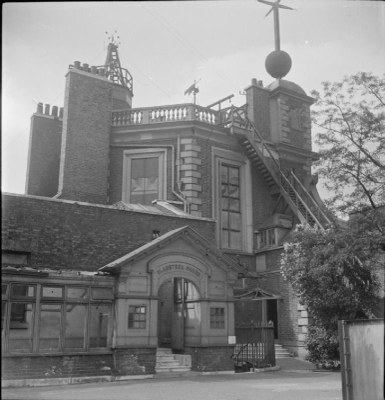Das Royal Observatory: Alltag im Royal Observatory, Greenwich, London, 1945

Zwar ist das Royal Observatory in Greenwich heute am bekanntesten für seine Lage am Nullmeridian ("Greenwich Mean Time"), seit seiner Gründung 1675 hat es jedoch eine wesentliche Rolle in der Geschichte der Astronomie und Schifffahrtskunde gespielt. Der Name "Flamsteed House" geht auf den ersten Hofastronomen ("Astronomer Royal"), John Flamsteed (1646–1719), zurück, dessen Stelle von Charles II. geschaffen wurde. Heute befindet sich an diesem Standort ein Museum, während die Forschung auf verschiedene andere Einrichtungen verteilt wurde.
Cecil Beaton, The Royal Observatory - Everyday Life at the Royal Observatory, Greenwich, London, England, Großbritannien, Schwarz-weiß-Fotografie, 1945; Bildquelle: Imperial War Museum, © IWM (D 24697), http://www.iwm.org.uk/collections/item/object/205201920, IWM Non Commercial Licence.